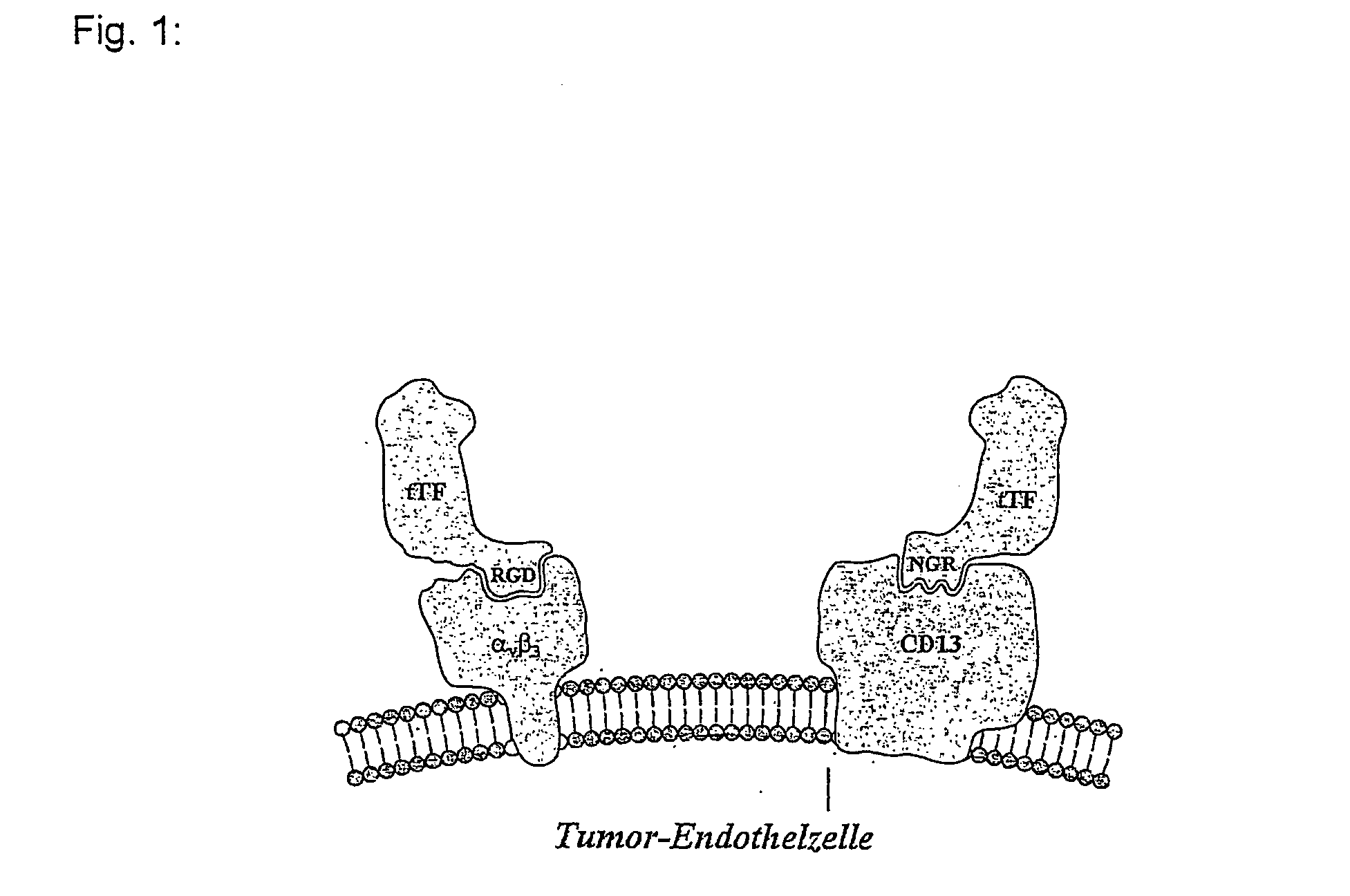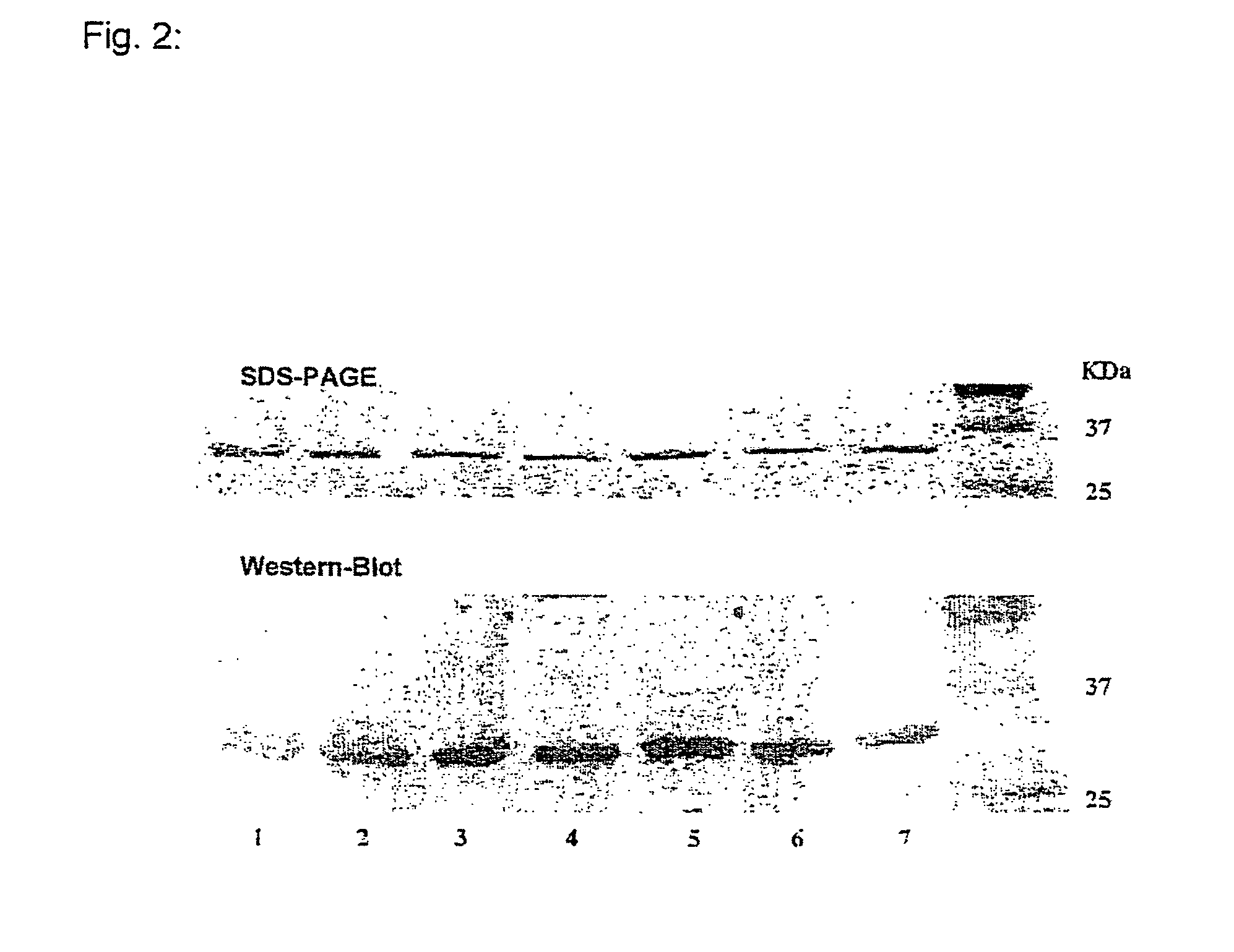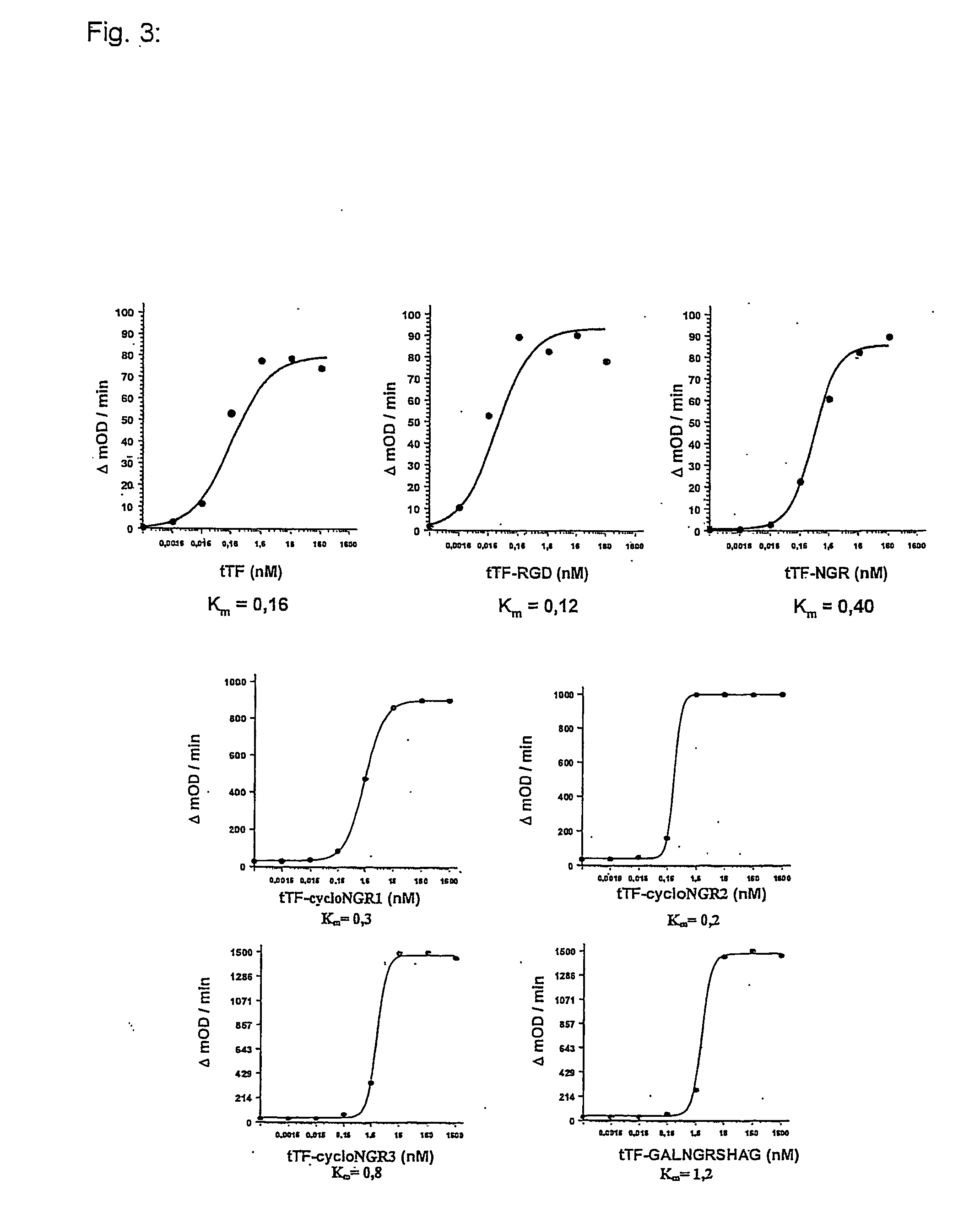Fusion polypeptides, and use thereof in antivascular tumor therapy
- Summary
- Abstract
- Description
- Claims
- Application Information
AI Technical Summary
Benefits of technology
Problems solved by technology
Method used
Image
Examples
example 1
Expression and Purification of tTF and tTF Fusion Proteins
[0084] The cDNA coding for the N-terminal 218 amino acids of tissue factor TF (designated as tTF hereinafter) was synthesized by the polymerase chain reaction (PCR) using the primers shown in SEQ ID NO:16 and SEQ ID NO:17 (FIG. 27) and cloned into the expression vector pET-30a(+) (Novagen). The recombinant plasmids were transformed in E. coli (BL21), expressed and purified (Qiagen Plasmid Kit).
[0085] Along with the truncated tissue factor tTF, tTF peptide fusion proteins were constructed, wherein the targeting peptides are first bound to the carboxyl terminal end of the soluble tissue factor tTF. The following linear fusion proteins were constructed:
tTF-GRGDSP (SEQ ID NO:3; FIG. 14; designated tTF-RGD hereinafter; the PCR primers SEQ ID NO:18 and SEQ ID NO:19 (FIG. 28) were used);
tTF-GNGRAHA (SEQ ID NO:4; FIG. 15; designated tTF-NGR hereinafter; the PCR primers SEQ ID NO:20 and SEQ ID NO:21 (FIG. 29) were used);
tTF-GA...
example 2
Functional Characterization of tTF and tTF Fusion Proteins
[0091] The functional activity of these fusion proteins with respect to cofactor activity in the activation of factor X to factor Xa via factor VIIa was demonstrated in vitro by Michaelis-Menten analyses. The ability of tTF and of the tTF fusion polypeptides to intensify the specific proteolytic activation of FX via FVIIa in the presence of phospholipids was determined in a slightly modified version of the method described by Ruf (45). For this, 20 μl of each of the following reagents was pipetted in microtiter plates: (a) 50 nM recombinant FVIIa (Novo-Nordisk) in TBS-BSA; (b) 0.16 nM-1.6 μM tTF / tTF fusion polypeptide in TBS-BSA; (c) 25 mM CaCl2 and 500 μM phospholipid vesicle (phosphatidylcholine / phosphatidylserine, 70 / 30, M / M; Sigma). After 10 min incubation at room temperature, 20 μl of the natural substrate FX (Enzyme Research Laboratories) was added at a concentration of 5 μM. Then a sample was taken by pipette at one-m...
example 3
Binding of the tTF Fusion Proteins to αvβ3 In Vitro and In Vivo
[0092] Binding of tTF-RGD and tTF-NGR to the αvβ3 integrin was demonstrated in an ELISA (Enzyme Linked Immunosorbent Assay), by immobilizing purified αvβ3 on microtiter plates (see FIG. 4). The specificity of the binding of tTF-RGD to αvβ3 was emphasized by the fact that the synthetic peptide with the sequence GRGDSP (SEQ ID NO:33) (from the company Gibco) competitively inhibits the binding of tTF-RGD to αvβ3 in this test system (see FIG. 5).
[0093] Next the specific binding of tTF-RGD to αvβ3 on endothelial cells was evaluated. For this, the differential binding of biotinylated tTF and tTF-RGD to endothelial cells in suspension was analysed by FACS (Fluorescence Activated Cell Sorting). The fact that all endothelial cells held in tissue culture are activated, i.e. express αvβ3 molecules, is utilized experimentally. This can be detected by various immunohistochemical methods. A cultivated endothelial cell thus correspon...
PUM
| Property | Measurement | Unit |
|---|---|---|
| Composition | aaaaa | aaaaa |
| Structure | aaaaa | aaaaa |
Abstract
Description
Claims
Application Information
 Login to View More
Login to View More - R&D
- Intellectual Property
- Life Sciences
- Materials
- Tech Scout
- Unparalleled Data Quality
- Higher Quality Content
- 60% Fewer Hallucinations
Browse by: Latest US Patents, China's latest patents, Technical Efficacy Thesaurus, Application Domain, Technology Topic, Popular Technical Reports.
© 2025 PatSnap. All rights reserved.Legal|Privacy policy|Modern Slavery Act Transparency Statement|Sitemap|About US| Contact US: help@patsnap.com



